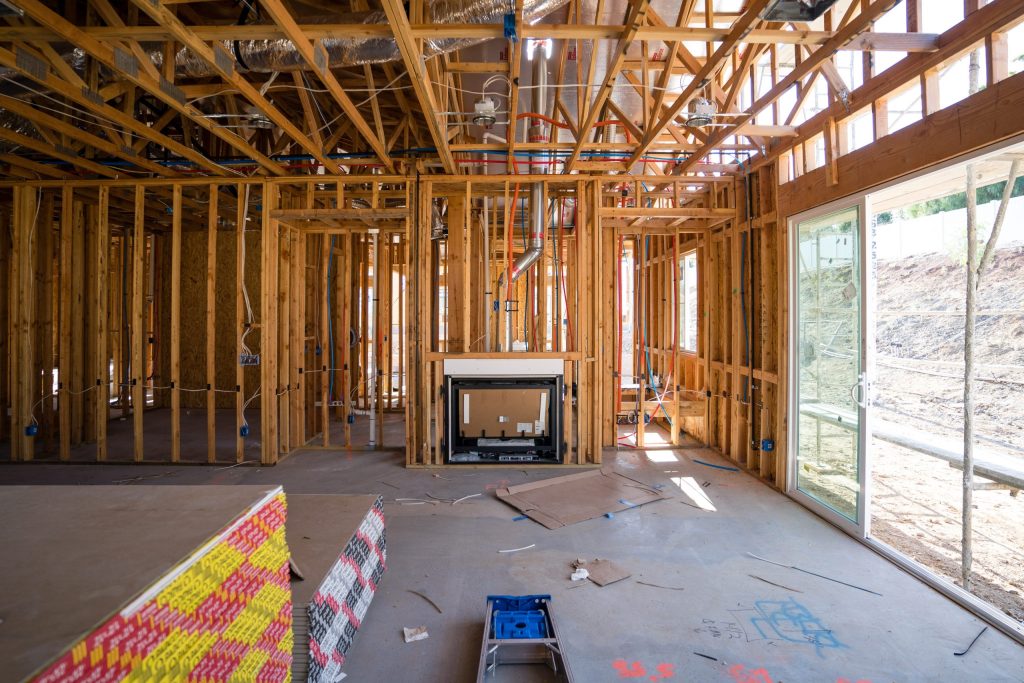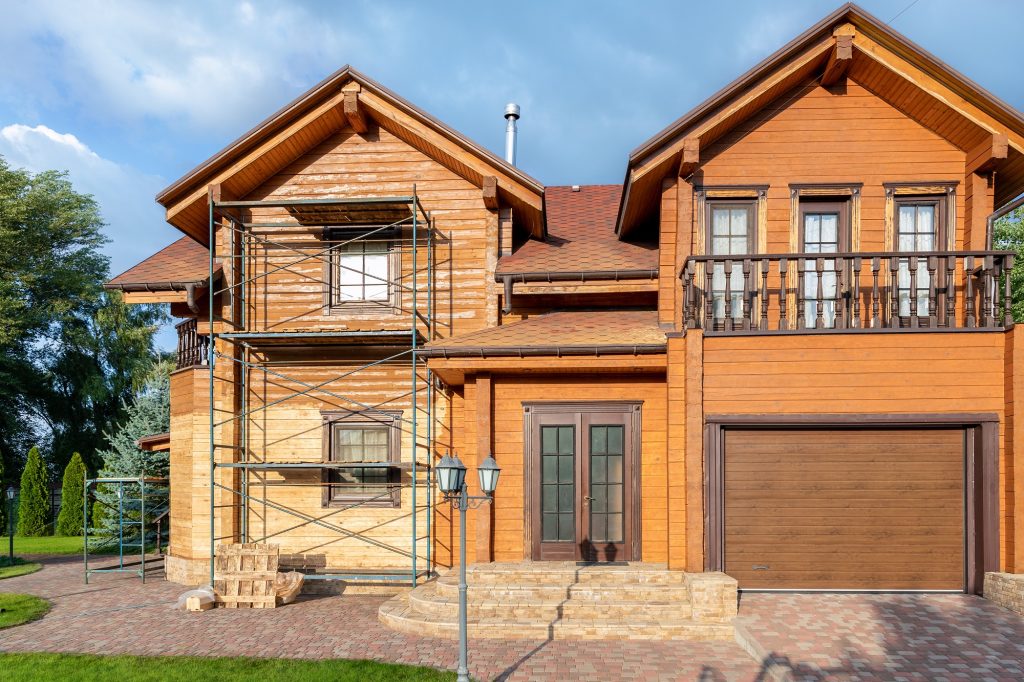Introduction to Adaptive Reuse in Construction
Adaptive reuse in construction is like giving old buildings a new purpose. Instead of tearing them down, we use what’s already there and make it fresh and useful again. It’s like a creative makeover that keeps the history and character of the place while making it work for today’s needs. This way of renovating not only helps the environment by reducing waste but also saves money compared to building something entirely new. It’s a smart way to blend the old with the new, honoring the past while embracing the future. In this exploration of adaptive reuse, we’ll uncover how it’s changing the way we look at old buildings and making them vibrant again.
Definition and Concept of Adaptive Reuse
Adaptive reuse is all about giving a second life to old buildings instead of knocking them down. It’s like recycling, but for buildings! Instead of starting from scratch, we use what’s already there and transform it to serve new needs. This approach keeps the charm and history of the original building while making it useful for modern times.
Historical Perspective on Adaptive Reuse
People have been repurposing buildings for ages. Throughout history, communities have transformed old structures, like turning castles into homes or warehouses into markets. This history shows us that adaptive reuse isn’t just about renovation; it’s a way of connecting the past with the present.
The Process of Adaptive Reuse
Assessment of Existing Structures
Before the makeover begins, experts check out the old building. They look at what’s working, what needs fixing, and what could be repurposed. This assessment helps understand the building’s potential for the transformation ahead.
Design and Planning Considerations
Once the assessment is done, it’s time to plan! Architects and designers put their heads together to figure out how to breathe new life into the old building. They think about what it’ll be used for and how to make it functional while keeping its original character.
Structural Modifications and Challenges
Changing an old building isn’t always easy! Sometimes, there are tricky structural problems to solve. It could be anything from reinforcing weak foundations to making room for modern amenities. Overcoming these challenges is a big part of making adaptive reuse successful.
Benefits of Adaptive Reuse
Sustainability Wins
Adaptive reuse is a champion of sustainability in the construction industry. It significantly reduces environmental impact by repurposing existing structures, thereby minimizing the need for new materials and reducing construction waste. This approach aligns with eco-friendly practices, lessening the carbon footprint associated with demolition and new construction. By embracing adaptive reuse, we contribute positively to environmental conservation and resource preservation, making a substantial impact on our planet’s sustainability for future generations.
Economic Advantages
Beyond its environmental benefits, adaptive reuse often proves economically advantageous. Renovating an existing structure tends to be more cost-effective than demolishing and constructing anew. It can revitalize neighborhoods, bringing economic opportunities to areas where old buildings may have fallen into disuse. The cost savings from reusing existing structures can be redirected into improving design aesthetics or incorporating innovative technologies, enhancing the overall value proposition of the revamped space.
Preserving Heritage
Old buildings hold stories of the past, embodying the history and culture of their time. Adaptive reuse allows us to maintain this historical significance by preserving architectural heritage. By repurposing these structures, we retain their unique character, architectural elements, and historical value, connecting the present to the past. This preservation isn’t just about bricks and mortar; it’s about safeguarding our collective heritage and passing it on to future generations, enriching our cultural tapestry.
Examples of Successful Adaptive Reuse Projects
New Life for Homes
Residential adaptive reuse projects breathe new life into old structures. Former factories, warehouses, or schools transformed into modern, stylish lofts or apartments showcase how adaptive reuse can provide unique, character-filled living spaces. These spaces blend historical charm with contemporary comforts, offering residents an unparalleled experience within a piece of living history.
Commercial Marvels
Commercial adaptive reuse ventures span various industries. Old mills, barns, or industrial spaces converted into vibrant retail outlets, restaurants, or offices illustrate the versatility of this approach. Such transformations not only preserve the building’s legacy but also infuse it with new purpose, contributing to the economic revitalization of communities.
Unconventional Transformations
Adaptive reuse isn’t constrained by convention. Churches repurposed into libraries, train stations transformed into museums, or warehouses reimagined as community centers—all showcase the boundless possibilities of adaptive reuse. These unconventional transformations challenge our perceptions, breathing fresh life into forgotten structures while serving the evolving needs of communities.
Challenges and Considerations
Regulatory and Legal Hurdles in Adaptive Reuse in Construction
Navigating the labyrinth of regulations and laws is a critical aspect of Adaptive Reuse in Construction. Compliance with varying rules governing renovation is imperative. Meeting safety standards and adhering to legal frameworks ensures a smooth transformation of old spaces into functional, safe environments.
Technical Challenges in Adaptive Reuse within Construction
Adaptive Reuse in Construction often presents technical hurdles. Revamping old structures involves addressing structural integrity, working with aged materials, and integrating modern systems. Overcoming these technical challenges demands expertise and innovation to ensure a successful transition.
Community Engagement and Perception in Adaptive Reuse within Construction
Engaging the community is pivotal in the realm of Adaptive Reuse in Construction. Community involvement and support are vital for successful projects. Shaping positive perceptions and addressing concerns within the community fosters acceptance and enthusiasm for repurposing old structures.
Trends in Adaptive Reuse
Embracing Emerging Technologies and Techniques in Adaptive Reuse within Construction
The evolution of Adaptive Reuse in Construction involves leveraging cutting-edge technologies. Innovative materials and construction techniques are transforming the way old buildings are refurbished. Embracing these advancements ensures safer, more efficient renovations without compromising the historical essence.
Fostering Innovative Design Approaches for Adaptive Reuse in Construction
Designers and architects are pioneering creative approaches in Adaptive Reuse within Construction. They’re merging historical aesthetics with modern functionality, ensuring renovated spaces are not only practical but also visually captivating.
Envisioning Future Prospects and Developments in Adaptive Reuse within Construction
The future of Adaptive Reuse in Construction looks promising. Sustainability and conservation drive the emphasis on reimagining existing structures. Integrating green technologies and community-centric designs ensures a bright future where Adaptive Reuse becomes a cornerstone of construction practices.
Adaptive Reuse in Construction Around the World
Global Perspectives and Initiatives in Adaptive Reuse in Construction
Exploring Adaptive Reuse in Construction around the world reveals diverse perspectives and innovative initiatives. Different regions approach the renovation and repurposing of old buildings uniquely, showcasing a global commitment to sustainable construction practices.
Cultural Variances in Adaptive Reuse Strategies within Construction
Adaptive Reuse strategies within Construction vary based on cultural influences and regional needs. Understanding these differences sheds light on how different societies value and utilize their historical structures, reflecting distinct cultural identities.
Notable International Examples of Adaptive Reuse in Construction
Notable examples of Adaptive Reuse in Construction worldwide serve as inspiration. These international case studies highlight the successful transformation of old structures into vibrant, functional spaces, demonstrating the global impact of this approach.
Economic Impact and ROI in Adaptive Reuse in Construction
Cost-Benefit Analysis: Adaptive Reuse’s Economic Impact in Construction
Conducting a thorough cost-benefit analysis of Adaptive Reuse in Construction provides insights into its economic impact. Comparing costs and gains showcases its financial viability and long-term benefits in various economic landscapes.
Revitalization of Communities through Adaptive Reuse in Construction
Adaptive Reuse in Construction revitalizes communities, breathing new life into neglected areas. It fosters economic growth, generates employment, and enhances the overall well-being of communities, contributing to their sustainable development.
Real Estate and Market Trends in Adaptive Reuse in Construction
Tracking real estate and market trends related to Adaptive Reuse in Construction is crucial. Observing how these trends evolve over time helps understand market demands, investor interests, and shifts in consumer preferences regarding repurposed spaces.
Sustainable Practices in Adaptive Reuse in Construction
Green Building Certifications for Adaptive Reuse in Construction
Green building certifications play a pivotal role in ensuring sustainability in Adaptive Reuse projects within Construction. Meeting these certifications ensures that renovated spaces adhere to environmental standards, promoting eco-friendly practices.
Energy Efficiency and Resource Optimization in Adaptive Reuse in Construction
Energy efficiency and resource optimization are key pillars of sustainable Adaptive Reuse within Construction. Implementing innovative technologies and practices minimizes energy consumption and optimizes resource utilization in renovated structures.
Future Prospects and Challenges in Adaptive Reuse in Construction
Potential Growth Areas for Adaptive Reuse in Construction
Identifying potential growth areas for Adaptive Reuse in Construction unveils promising avenues for development. Recognizing sectors or regions ripe for renovation and repurposing within the construction industry offers opportunities for sustainable growth and development.
Overcoming Obstacles in Adaptive Reuse in Construction Initiatives
Navigating challenges in Adaptive Reuse in Construction initiatives is crucial for their success. Addressing issues such as regulatory complexities, structural limitations, and community acceptance presents hurdles that require strategic solutions for effective renovation projects within the construction sector.
Technological Advancements Driving Renovation in Adaptive Reuse in Construction
Technological advancements are shaping the future of Adaptive Reuse in Construction. Innovations in construction materials, methodologies, and digital tools are revolutionizing how old structures are renovated and repurposed, ensuring a more efficient and sustainable approach within the construction industry.
Collaborations and Partnerships in Adaptive Reuse in Construction
Public-Private Partnerships Fostering Adaptive Reuse in Construction
Public-private partnerships play a pivotal role in driving Adaptive Reuse in Construction initiatives. Collaborations between governments, businesses, and communities enable the pooling of resources and expertise, facilitating successful renovation endeavors within the construction sector.
Role of Architects, Engineers, and Urban Planners in Adaptive Reuse in Construction
Architects, engineers, and urban planners play instrumental roles in Adaptive Reuse in Construction projects. Their expertise in design, structural assessment, and community integration is indispensable for transforming old spaces into functional, modern environments within the construction industry.
Community Engagement Strategies for Effective Adaptive Reuse in Construction
Implementing community engagement strategies is essential for successful Adaptive Reuse in Construction projects. Involving stakeholders, gathering feedback, and addressing concerns ensure that renovation efforts align with community needs and aspirations within the construction sector.
Social Impact and Community Engagement
Social Sustainability in Adaptive Reuse Projects within Construction
Promoting social sustainability in Adaptive Reuse projects within the construction industry fosters inclusive development. Ensuring that renovated spaces cater to diverse community needs and contribute positively to social well-being is a cornerstone of sustainable renovation within the construction sector.
Stakeholder Involvement and Participation in Adaptive Reuse within Construction
Involving stakeholders at every stage of Adaptive Reuse initiatives within the construction sector is critical. Engaging stakeholders ensures their participation, making them active contributors to the renovation process and fostering a sense of ownership within the construction industry.
Addressing Community Needs through Adaptive Reuse in Construction
Adaptive Reuse projects that address specific community needs within the construction sector enrich social cohesion. Tailoring renovations to fulfill educational, cultural, or economic requirements within communities ensures that repurposed spaces serve as valuable assets for the people they serve within the construction industry.
We Transform Spaces: AAG Construction Services
At AAG Construction Services, we pride ourselves on being a leading Construction Company Vancouver dedicated to excellence and innovation. Our commitment to quality craftsmanship makes us a trusted name in the industry, providing tailored and comprehensive construction solutions. We focus on delivering exceptional results by harnessing cutting-edge techniques and industry-best practices, ensuring the success of each project.
Elevating Renovations: AAG Construction Services in Vancouver
At AAG Construction Services, our expertise extends to top-tier renovation services in Vancouver, where we redefine spaces and breathe new life into existing structures. Our dedication to precision and customer satisfaction shines through in every renovation endeavor. From residential makeovers to commercial transformations, we set the standard for quality, reliability, and unparalleled attention to detail. For transformative and high-caliber renovation solutions, explore our Construction Company Vancouver main page or discover exceptional renovations at Renovation Vancouver.


